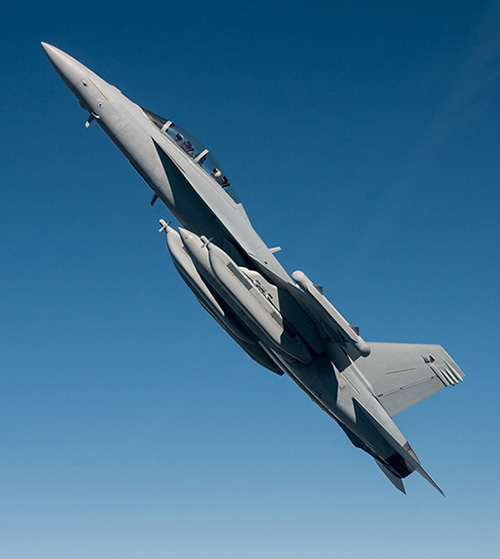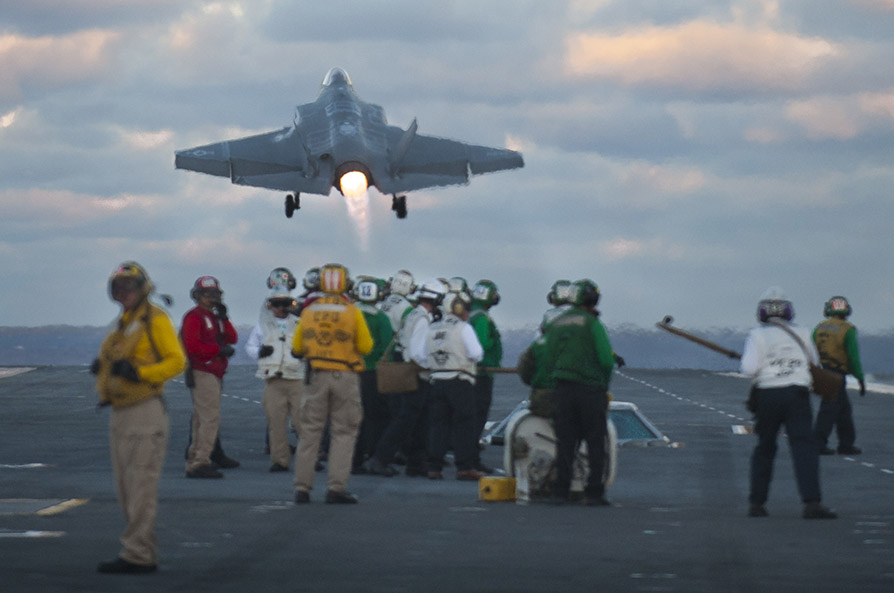By the 2020, Lockheed Martin will be able to build 17 F-35 per month, compared to the current rate on the three aircraft. This is confirmed by American society. Despite the beginning of the program, the US company expected to build 20 a month, delays and cuts in US defense have revised that estimate.
The clarification was necessary after a statement signed by Alcoa, a company that has just signed a contract from 1,1 billion dollars for the supply of titanium for the F-35 from the 2016 to the 2024. In the same press release, from Alcoa stated that they will support the "full-rate production" of 13 aircraft per month set by the middle of the 2020. It would therefore mean a production of 156 F-35 per year, compared to the 204 provided by Lockheed.
They commented angrily from the American giant. "We can't talk for Alcoa. Our goal is fixed to 17 aircraft per month ”.
The US military strategy, at least ideally, is structured so as to simultaneously defeat two distinct enemies in different parts of the world and be able to defend American territory against any attack. The problem is that some Air Force aircraft have reached twenty-seven years of activity. The aging of the military air fleet is now all too obvious and new bombers and fighters are needed.
 Despite continued appeals by the US military for extra funds, US military spending remains the highest in the world, with an 640 billion dollar budget in the 2014. The United States spends more than China, Russia, Saudi Arabia, France, the United Kingdom, Germany, Japan and India combined. In the 2015 balance sheet of the US Navy, presented over a year ago, for the first time since the 1980 there was no acquisition of the Hornet. The last order dates back to the 2013, with delivery of the fighters scheduled for the 2016. The last of the 138 EA-18G Growler (electronic warfare version - photo on the right) was included in the 2014 budget. The Congress, however, added another fifteen Growlers in the 2015 budget, responding to a specific request from the Navy to satisfy a joint tactical need. A strategy to keep the production line active in Boeing plants up to 2017.
Despite continued appeals by the US military for extra funds, US military spending remains the highest in the world, with an 640 billion dollar budget in the 2014. The United States spends more than China, Russia, Saudi Arabia, France, the United Kingdom, Germany, Japan and India combined. In the 2015 balance sheet of the US Navy, presented over a year ago, for the first time since the 1980 there was no acquisition of the Hornet. The last order dates back to the 2013, with delivery of the fighters scheduled for the 2016. The last of the 138 EA-18G Growler (electronic warfare version - photo on the right) was included in the 2014 budget. The Congress, however, added another fifteen Growlers in the 2015 budget, responding to a specific request from the Navy to satisfy a joint tactical need. A strategy to keep the production line active in Boeing plants up to 2017.
The situation is the following. The most powerful Navy in the world has 600 fighters F / A-18C Hornet and Super Hornet, but for 340 only of them is expected to be replaced with the new F-35C. As is known, the F-35C will not reach the initial operational capacity before the 2018 with production that will be at the rate of 17 aircraft per year from the 2020. However, another two years will be needed to reach the full capacity of the F-35C platform. A timing that, unfortunately, has not taken into account the new theaters in northern Iraq and in western Syria. The Hornets, in fact, will have to fly much longer than expected in their life cycle. From the planned six thousand flight hours, the Navy hopes, thanks to a service life extension program (SLEP), to bring at least 150 aircraft to an operating life of ten thousand hours (the maximum limit set by the Naval Air Systems Command).
To date, considering the budget cuts, the Marina is under maintenance between the 65 and the 70 F / A-18C. The very high levels of stress to which the fighters are subjected, however, have highlighted worrying levels of corrosion on a greater number of fighters (we are always talking about platforms that operate at sea). According to a recent estimate, more than one hundred Hornets require urgent maintenance. Without forgetting that the "half-life extension" program for the Super Hornets has been expected for over a decade.
At the 30 January 2013, the Super Hornet fleet has reached 1,131,122 total flight hours. Even if the production of the F-35C were carried, absolutely utopian estimate, to 35 aircraft a year, it would always be necessary from two to three new Hornet squadrons. But as we know, Lockheed will manage to produce only half.
 (photo: Lockheed Martin / Boeing)
(photo: Lockheed Martin / Boeing)












